|
|
| |
|
|
| |
|
|
|
|
| |
 Travel
America Travel
America
Learn before you travel. This section of Fun Easy
English focuses on facts and other cool stuff about
your favorite U.S. state. This is great English
reading practice. This page focuses on the state of
Maine. |
 Hey
if you cannot understand something on this page, Hey
if you cannot understand something on this page,
then use the Fun Easy English
dictionary
(opens in a new window) |
|
|
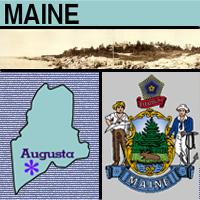 Maine Maine
The largest of the New England states in area,
Maine, in 1820, was the 23rd state to join the
Union. Its name comes from an ancient French
province of the same name. The most sparsely
populated state east of the Mississippi River, it's
appropriately called the "Pine Tree State," as 90
percent of its land is forest. Not surprisingly,
most of Maine's economy is related to timber and the
production of paper and paper products although the
millions of tourists who flock each summer to
"Vacationland" are a significant source of revenue.
The capital is Augusta; the state flower is the
white pine cone and tassel. |
|
Maine
State Flag
The state flag of Maine was adopted in 1909. It
displays Maine's coat-of-arms on a field of blue (the same
shade of blue as the national flag). Maine's state seal also
displays the coat of arms.
The North star shines above Maine's motto: "Dirigo" ("I
Lead," or "I Direct"). The center shield features symbols of
the natural richness of Maine - a pine tree (white pine is
Maine's state tree, and "The Pine Tree State" is Maine's
nickname), a moose (the official state animal), the sea, and
the sky.
The farmer is a symbol of pride in Maine's agricultural
roots. The sailor represents Maine's strong ties to the sea.
A banner below displays the state name; "MAINE" (in capital
letters).
The North star (Polaris) also appears on the state flag of
Alaska. Polaris is not merely a symbol of guidance -
travelers have depended on it for many centuries to find
their way (it always marks due north). |
|
Source:
State Symbols USA |
|
|
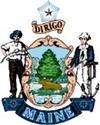 Maine
State Facts Maine
State Facts
Picture: state seal of Maine |
|
State Capital |
Augusta |
|
Nickname |
Pine Tree State |
|
Motto |
Dirigo (I direct) |
|
Statehood |
March 15, 1820 (23th) |
|
Origin of Name |
Probably a reference to the state region being a
mainland, different from its many surrounding
islands. |
|
Largest Cities |
Portland, Lewiston, Bangor, Auburn, South Portland |
|
Border States |
New Hampshire |
|
Area |
30,865 sq. mi.; 39th largest |
|
State Bird |
Chickadee |
|
State Flower |
White pine cone and tassel (pinus strobus, linnaeus) |
|
State Tree |
Eastern White Pine |
|
State Song |
State Song of Maine |
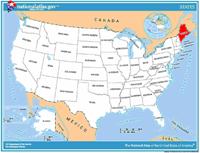 Travel and
tourism site for Maine - This state travel and
territorial tourism site provides ideas for your vacations,
meetings, and more. Travel and
tourism site for Maine - This state travel and
territorial tourism site provides ideas for your vacations,
meetings, and more. |
|
|
Maine Stories |
|
|
The Port of Portland, Maine
Would you ever guess that the closest U.S. port city to Europe is in
Maine? Well, it is.
The coastline of Maine totals about 3,500 miles and consists of
sandy beaches, peninsulas, islands, inlets, bays, coves and harbors.
Portland Harbor is one of many harbors on the Maine coast. The city
was built on two hilly peninsulas overlooking Casco Bay. The harbor
became a major shipbuilding and mast building center in the 18th
century. By 1806, Portland ranked as the sixth largest port in the
country. Its success made it a target for attack by the British
during the War of 1812 and by the Confederates during the Civil War.
Portland was also a target for German U-boats, or submarines, during
World War I. It was rated the most important harbor in the
continental U.S. during World War II, since it was the closest one
to Europe. The coastline and islands of Casco Bay were ringed with
artillery bunkers on the alert for submarines. Some fishermen and
divers claim that there are sunken German U-boats somewhere in Casco
Bay. |
|
|
Wabanaki Basketry
The Penobscot, Passamaquoddy, Micmac, and Maliseet tribes of Maine
are known as the Wabanaki Indians, or "People of the Dawn." They are
known for their baskets that they weave with the leaves of sweet
grass and thin strips of an ash tree (splints). These Indian tribes
share a common story that tells how their ancestors emerged from an
ash tree when the Creator split it with an arrow. So, for thousands
of years, they have used ash splints to make baskets for both
personal and community use. Today, many people collect them as
beautiful works of art.
The baskets fall into two categories: work baskets, which are used
for gathering, storing, and transporting goods, and fancy baskets,
ones that are crafted for the public, with decorative designs.
Intricate shapes and designs and bold colors are used to make woven
handkerchief baskets, powder-puff holders, purses, vases,
wastebaskets, thimble baskets, candy dishes, knitting baskets,
cradles, and fans.
Mary Mitchell Gabriel, a member of the Passamaquoddy tribe, has
spent more than 60 years perfecting the art of basket making. She is
working to preserve this important cultural tradition by teaching
her two daughters how to make the baskets. She is also teaching
others through the Maine Cooperative Extension Service and the Maine
Basketmakers Alliance. |
|
|
Bean-Hole Beans
What's a bean-hole bean? No, it's not a bean with a hole in it.
Bean-hole beans get their name because they are baked in a hole. For
hundreds of years, the Penobscot Indians of Maine cooked their food
in a hole in the ground. The first thing you need to cook bean-hole
beans is a shovel!
Recipe for bean-hole beans:
-Dig a hole in the ground 3 feet deep and line it with rocks.
-Build a fire in the hole and let it burn down to large embers and
ash. (This can take half a day before enough coals are produced to
cook the beans properly.)
-Use dry beans such as Great Northern, Yellow Eye, Jacob's Cattle,
or Soldier.
-Other ingredients include onions, salt pork, ham hock, bacon,
tomatoes, brown sugar and molasses.
Put the beans and other ingredients in a cast iron pot and cover
with water and a lid. Place the pot in the hole, cover with a wet
dish towel or burlap sack, shovel some of the embers and ashes on
top of the pot, and then cover with dirt. Cooking time varies
depending on which recipe is used but it can take as long as 16
hours. Then get ready with a shovel and a bowl! |
|
Source:
Library of Congress |
|
 National
Forests, Parks, and Monuments of Maine National
Forests, Parks, and Monuments of Maine
The following is a description of national
forests, parks, and monuments in the state
of Maine. If you plan to visit or live in
Maine for awhile then you should definitely
plan to visit some of these fantastic
places. |
|
|
|
National Forests |
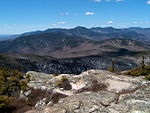 White
Mountain White
Mountain
This National Forest is located in the White
Mountains, which the Appalachian Trail and
White Mountain Scenic Byway pass through.
The forest includes Mount Washington, which
at 6,288 ft (1,917 m) is the highest point
in the Northeast and the location of the
fastest wind speed recorded on earth,
although the summit is located in a state
park. This national forest is also partially
located in the state of New Hampshire. |
|
|
|
National Parks |
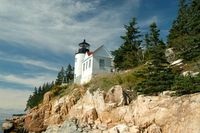 Acadia Acadia
Covering most of Mount Desert Island and
other coastal islands, Acadia features the
tallest mountain on the Atlantic coast of
the United States, granite peaks, ocean
shoreline, woodlands, and lakes. There are
freshwater, estuary, forest, and intertidal
habitats. |
|
|
|
National Monuments |
 Katahdin
Woods and Waters Katahdin
Woods and Waters
Katahdin Woods and Waters National Monument
covers 87,563 acres (35,435 ha) of mountains
and wilderness in the North Maine Woods area
of north-central Maine, including a section
of the East Branch Penobscot River. It
borders the eastern side of Baxter State
Park in Penobscot County. |
|
|
|
|
Travel America |
|
|
Acadia National Park
(Beginner - Listening,
reading)
A video lesson which shows you an interesting place in America.
The English is
spoken at 75% of normal speed.
Great English listening and reading practice.
This video is all about Acadia National Park. |
|
|
|
|
|
|
|
|
Cool America |
 About the U.S.A. About the U.S.A.
About the U.S.A. is an American
Studies reader that examines the customs, government, and history of the
United States of America. The text provides a wealth of information on U.S.
geography and history; the roles of local, state, and federal government;
national holidays and symbols; the Constitution; and citizenship. The book,
which was written for intermediate to advanced learners of English, contains
a range of activities for language students to practice listening, speaking,
reading, and writing. (opens to a new PDF window)
Great English reading
practice. |
 About
America About
America
Learn about the fascinating history and government of
the United States of America. Lessons include content on
American Government, American History, and Integrated
Civics. Handouts with interactive games and
student-centered activities encompass all four language
skills: speaking, listening, reading, and writing.
Great English reading practice for
beginning to intermediate students. |
 American Teens Talk! American Teens Talk!
Americans Teens Talk! is a collection of interviews of
American high school students. Each interview is accompanied by vocabulary
notes and discussion questions. The interviews in American Teens Talk! give
learners a view into the lives of adolescents in the U.S. Through the
written format of the interviews, learners are able to increase their
vocabulary, practice their reading and listening skills, engage in
discussions, and learn more about U.S. culture. These
interviews come with audio programs.
Great English listening and
reading |
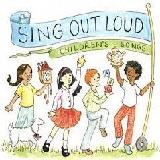 Sing Out Loud Children's Songs Sing Out Loud Children's Songs
Sing Out Loud Children's Songs includes popular children's songs in the U.S.A. Posters accompany the
individual Sing Out Loud Children's Songs. These
songs come with audio programs.
Great English listening and reading
practice. |
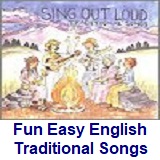 Sing Out Loud Traditional Songs Sing Out Loud Traditional Songs
The Sing Out Loud Traditional Songs
collection contains 13 traditional American folk songs and song lyrics.
Listen to the songs online, read the lyrics, and collect the posters that
accompany the songs. These
songs come with audio programs.
Great English listening and reading
practice. |
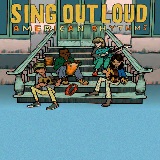 Sing Out Loud American Rhythms Sing Out Loud American Rhythms
Do you love music? Want to use it
to learn English? Check out the hip-hop inspired song "Peace" from Sing Out
Loud American Rhythms. American Rhythms includes a variety of musical genres
from many different artists in the U.S.A. These songs will appeal to teens
and young adults. These
songs come with audio programs.
Great English listening and reading
practice. |
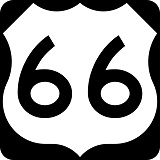 Route
66 - Famous American Road Route
66 - Famous American Road
U.S. Route 66 (US 66 or Route 66), also known as the Will Rogers Highway, the
Main Street of America or the Mother Road, was one of the original highways in
the U.S. Highway System. The highway, which became one of the most famous roads
in the United States, originally ran from Chicago, Illinois, through Missouri,
Kansas, Oklahoma, Texas, New Mexico, and Arizona before ending in Santa Monica,
California, near Los Angeles, covering a total of 2,448 miles (3,940 km). It was
recognized in popular culture by both the hit song "(Get Your Kicks on) Route
66" and the Route 66 television show in the 1960s. |
Route 66: The Highway That's the Best
(Beginner - Listening)
A video lesson which shows you an interesting place in America.
The English is
spoken at 75% of normal speed.
Great English listening practice.
This video shows travel along Route 66, the most famous road in
America. |
Chicago: The Start of Route 66
(Beginner - Listening)
A video lesson which shows you an interesting place in America.
The English is
spoken at 75% of normal speed.
Great English listening practice.
This video shows travel along Route 66, the most famous road in
America. |
Going West for Decades on Route 66
(Beginner - Listening)
A video lesson which shows you an interesting place in America.
The English is
spoken at 75% of normal speed.
Great English listening practice.
This video shows travel along Route 66, the most famous road in
America. |
Arizona: The Spirit of Route 66
(Beginner - Listening)
A video lesson which shows you an interesting place in America.
The English is
spoken at 75% of normal speed.
Great English listening practice.
This video shows travel along Route 66, the most famous road in
America. |
Route 66 California: The End of the Trail
(Beginner - Listening)
A video lesson which shows you an interesting place in America.
The English is
spoken at 75% of normal speed.
Great English listening practice.
This video shows travel along Route 66, the most famous road in
America. |
Ten Must-See Route 66 Attractions
(Beginner - Listening)
A video lesson which shows you an interesting place in America.
The English is
spoken at 75% of normal speed.
Great English listening practice.
This video shows travel along Route 66, the most famous road in
America. |
Four Famous Foods On Route 66
(Beginner - Listening)
A video lesson which shows you an interesting place in America.
The English is
spoken at 75% of normal speed.
Great English listening practice.
This video shows travel along Route 66, the most famous road in
America. |
International Tourists Drawn to Route 66
(Beginner - Listening)
A video lesson which shows you an interesting place in America.
The English is
spoken at 75% of normal speed.
Great English listening practice.
This video shows travel along Route 66, the most famous road in
America. |
|
|
|
|
Search Fun Easy English |
|
|
|
|
|
|
|
|
|
|
|
|
|
|
|
About
Contact
Copyright
Resources
Site Map |